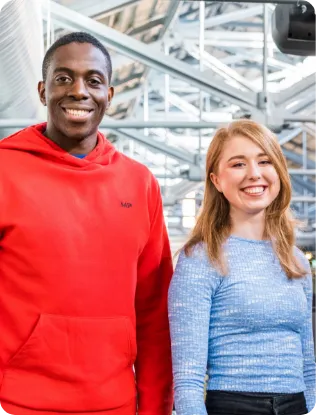The Future Trends of Mobile App Development in 2025
Published on: January 13, 2025
In a world where technology evolves at lightning speed, mobile app development continues to shape the way we live, work, and interact. The mobile app ecosystem is no longer just about functionality; it is about delivering enriched, intuitive, and immersive user experiences. As businesses strive to remain competitive, keeping up with the latest trends of mobile app development is not merely an option—it is a necessity. Emerging technologies are influencing the trajectory of app development, while user-centric innovations are redefining convenience.
In this blog, we will explore the key trends of app development in 2025 that are set to transform industries, optimise business processes, and redefine how users interact with technology in everyday life.
Key Future Trends in Mobile App Development
The trends of mobile app development are driven by technological advancements and changing user expectations. Let’s explore some of the most impactful developments shaping the future:
1. Artificial Intelligence and Machine Learning
AI and machine learning are at the forefront of innovation, enabling apps to deliver personalized experiences and predictive insights. From recommendation engines to AI-powered chatbots, these technologies are transforming user engagement.
- AI-driven Personalization: Using tailored content based on user behaviour ensures apps meet individual user preferences, making interactions more intuitive and engaging.
- Predictive Analytics: AI and ML powered Apps can anticipate user needs based on their previous searches, such as suggesting purchases or content before users actively search for them.
- Examples include virtual assistants like Siri, chatbots for customer service, and intelligent search engines that refine results in real-time.
2. 5G Technology
The rollout of 5G networks is set to revolutionise mobile app capabilities. With its ultra-low latency and blazing-fast speeds, 5G unlocks possibilities for immersive applications and seamless real-time interactions.
- Impact on Speed and Performance: The high speed 5G networks allows faster data transfer ensuring a smoother experience for apps, enabling higher-quality streaming and faster downloads.
- Enabling Technologies: This technology supports Augmented reality (AR), extended reality (XR), and IoT apps which now operate more efficiently without performance lags.
- Examples are advanced gaming apps offering ultra-HD experiences, real-time collaborative tools, and AR shopping apps delivering lifelike virtual try-ons.
3. Internet of Things (IoT) Integration
IoT-enabled apps are becoming essential as smart devices proliferate. Mobile apps now serve as central controllers for connected ecosystems, enhancing convenience and functionality.
- Applications of IoT in mobile devices for managing smart home appliances to tracking industrial equipment in real-time, IoT apps bridge the gap between physical and digital domains.
- Benefits of IoT includes improved device interoperability, remote accessibility, and optimized efficiency.
- Examples: Mobile apps for adjusting thermostats, wearable devices tracking health metrics, and vehicle maintenance monitoring.
4. Extended Reality (XR)
Extended reality, encompassing AR, VR, and mixed reality (MR), is revolutionizing user experiences across industries. XR apps provide immersive environments that enhance engagement.
- Applications of XR in retail apps offer AR-based product previews, VR gaming platforms, and training tools simulating real-world scenarios.
- Benefits like improved user engagement through interactive and immersive storytelling capabilities.
- Examples of XR include IKEA’s AR app for virtual furniture placement and VR tools used for employee skill development.
5. Blockchain Technology
Blockchain’s mechanism ensures transparency, security, and decentralization in mobile app development. This technology offers immense potential from secure payment systems to decentralized apps (DApps).
- Application of blockchain in financial apps ensures secure transactions, in healthcare apps for safeguarding patient data, and supply chain management tools.
- Numerous Benefits are offered, counting a few like reduced fraud, increased transparency, and enhanced trust through immutable data records.
- The most popular examples of blockchain Apps are Cryptocurrency wallets, apps for tracking product origins, and peer-to-peer lending platforms.
6. Mobile Commerce (M-Commerce)
With the rise of mobile commerce, businesses are focusing on apps that facilitate seamless transactions. Digital wallets, one-click purchases, and secure payment gateways are enhancing the shopping experience.
- Applications of this trend in Apps for e-commerce, grocery delivery, and event ticketing are transforming purchasing behaviours.
- Its examples are platforms like Amazon with mobile-first designs and payment apps like PayPal offering quick transactions.
- This trend is mostly used in voice shopping and AI recommendations, and it is making mobile commerce even more intuitive.
7. Touchless User Interfaces
Touchless interactions are gaining traction as users seek convenience and hygiene even after the covid era. Apps are increasingly integrating voice, gesture, and motion-based controls to provide ease and comfort to its users.
- Applications that use voice commands for navigation, gesture-controlled smart TVs, and motion-activated fitness apps.
- Best examples include Google Assistant for hands-free queries, apps for wearable fitness tracking, and voice-activated banking apps.
- Future Potential of enhancements in haptic feedback and gesture recognition promise even more fluid interactions.
8. Chatbots
Chatbots powered by AI are enhancing customer service by providing 24/7 assistance. Chatbots integrated into apps offer quick solutions and personalized interactions.
- Its applications in E-commerce apps offer product recommendations, in banking apps for answering user queries, and healthcare apps for managing appointments.
- The most apt example is ChatGPT-based customer support bots and bots handling online orders efficiently.
- The emerging trend of multilingual bots capable of handling complex conversations will expand global reach.
9. Cloud Computing
Cloud technology is transforming the way apps are developed and used. Cloud-based mobile apps offer scalability, real-time synchronization, and efficient storage.
- Its application best sets in Cloud-powered collaboration tools, video conferencing apps, and remote learning platforms.
- The perfect examples include Google Drive for file storage, Dropbox for team collaborations, and Zoom for seamless virtual meetings.
- Its main advantages are reduced dependency on local hardware, enabling lightweight apps with robust capabilities.
10. Metaverse Apps
The metaverse is reshaping digital experiences by blending virtual and physical realities. Here, mobile apps are playing a pivotal role in accessing these immersive environments.
- Applications like virtual event hosting, 3D gaming environments, and metaverse-based marketplaces.
- Its examples include Apps like Roblox for immersive gaming and platforms like Horizon Workrooms for virtual meetings.
- Future Developments in this trend would be enhanced avatars, realistic simulations, and cross-platform compatibility will expand app capabilities.
11. Super Apps
Super apps are redefining convenience by consolidating multiple functionalities into a single platform. These apps provide a seamless user experience, eliminating the need for multiple downloads.
- This is best applied in Apps combining messaging, e-commerce, payments, and ride-hailing services into one interface.
- A few examples to count are WeChat offering chat, payments, and bookings; Grab integrating food delivery and transport.
- The present trend is expansion of super apps beyond Asia to other global markets.
Emerging Design and Development Approaches
1. Voice User Interfaces (VUI)
Voice-based interactions are becoming mainstream, with users embracing hands-free convenience. Apps with VUI are integrating with voice assistants for enhanced functionality.
- Examples of such Apps include smart home control apps linked to Alexa, navigation apps integrating voice prompts, and apps for hands-free shopping lists.
- This is trending in combining VUI with AI for predictive voice commands that further streamline user experiences.
2. Low-Code and No-Code Development
Low-code and no-code platforms are democratizing app development, allowing businesses to create apps without extensive technical expertise. These tools speed up the development process and reduce costs.
- This trends' major benefits are faster launches, reduced reliance on developers, and adaptability to changing needs.
- Best examples are platforms like Microsoft PowerApps enabling rapid app creation.
3. Progressive Web Apps (PWAs)
Progressive Web Apps (PWAs) combine the best of web and mobile apps. They provide a smooth user experience with offline functionality and automatic updates.
- Applications are mainly done to E-commerce platforms like Flipkart Lite and content services offering offline reading modes.
- The main advantage is PWAs load faster, occupy less storage, and are accessible on any browser.
Conclusion
The trends of mobile app development and the trends of app development in 2025 are setting new benchmarks for innovation and user engagement. These advancements are not just technological milestones but opportunities to enhance user experiences and streamline business processes. By embracing these trends, businesses can drive customer loyalty, improve operational efficiency, and tap into new market segments.
At Squareroot Solutions, we specialize in leveraging these emerging trends to create bespoke solutions that address evolving market demands and position your business for long-term success.
Ready to future-proof your mobile app? Contact us today to turn your vision into reality!
Sarah is a chief CMO at Square Root Solutions. As a software developer, she excels in developing innovative and user-centric software solutions. With a strong proficiency in multiple programming languages, she specializes in creating robust and scalable applications. Besides her passion for software development, she has a keen interest in culinary adventures, enjoying a variety of unique and interesting foods.
What client speaks about us!
Don't just take our word for it - hear from our clients about their experience working with us and
why they trust us to deliver exceptional results.











